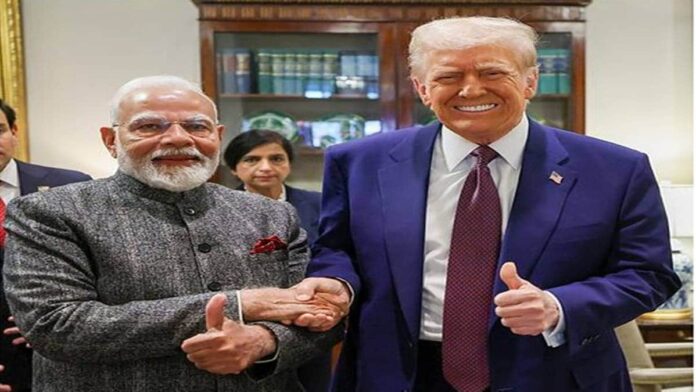Prime Minister Narendra Modi and US President Donald Trump met earlier last week in the White House amid tensions surrounding the US announcement of imposition of reciprocal tariff on trade partner countries to address “longstanding imbalances”. Per Nomura, the outcome of the bilateral meeting was in line with expectations, with near-term trade frictions likely to continue, and a possibility of a strategic partnership over the medium term. Sonal Varma, Managing Director and Chief Economist (India and Asia ex-Japan), Nomura, said, “Short-term risks from reciprocal tariffs remain, but medium-term gains are possible once the dust settles on the trade war.”
The bilateral Modi-Trump meeting was centered around a trade deal, more energy imports from the US, defense cooperation and a reiteration of the strategic partnership. In an analysis report released after the meeting with the two leaders, Nomura stated, “Negotiations on the India-US trade deal will start, and some concessions are likely, but given India’s higher tariff rate, high non-tariff barriers and its trade surplus with the US, it remains in Trump’s line of fire on reciprocal tariffs, in our view.”
ALSO READIndia aims for $ 500 billion export target, eyes trade agreement with US to boost sales: Exporters
What transpired and what followed the Modi-Trump meeting?
Earlier, while speaking about the reciprocal tariffs, Trump had particularly singled out India, stating that it has “more tariffs than nearly any other country” and that “it’s very hard to sell into India because they have trade barriers, very strong tariffs”. Post the meeting, US and India made following announcements:
• Trade deal: India-US to start negotiations on a trade deal to address the trade gap. Both countries agree to double bilateral trade to $500 billion by 2030.
• On reciprocal tariffs: Trump maintained that India has the highest tariffs in the world. He said that “now we are a reciprocal nation. Whatever India charges us, we will charge them”.
• Energy: India will import more US oil and gas to shrink the trade deficit. The US aims to become India’s top energy supplier. India will reform its laws to welcome US nuclear technology, and the two will cooperate on civil nuclear energy and small modular reactors.
• Defense: US plans to offer the F-35 warplane to India.
» Read More


